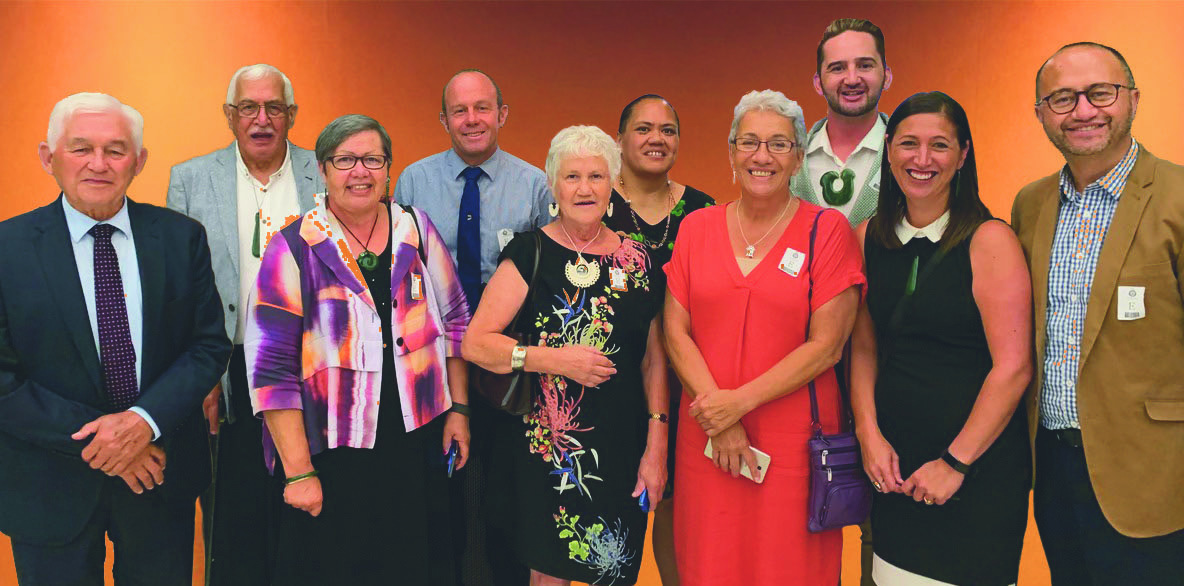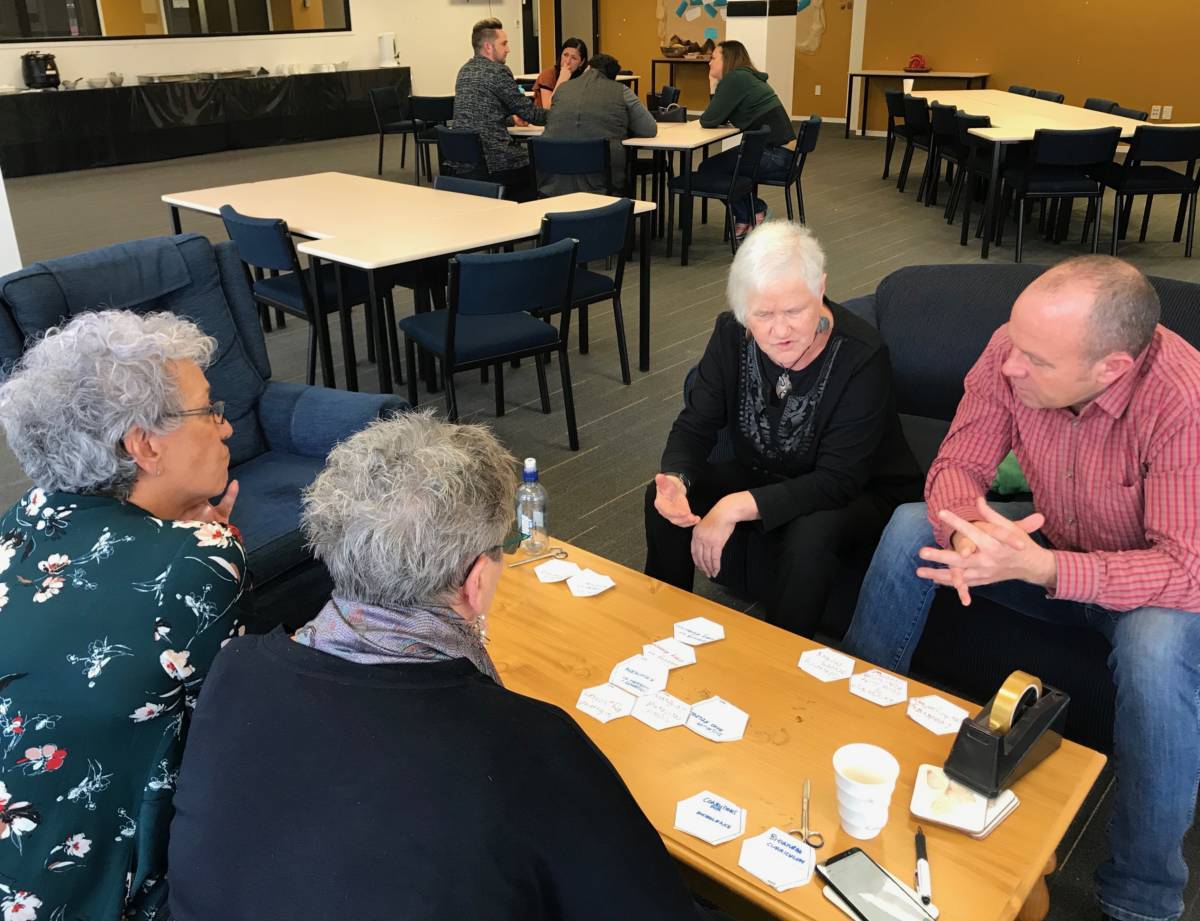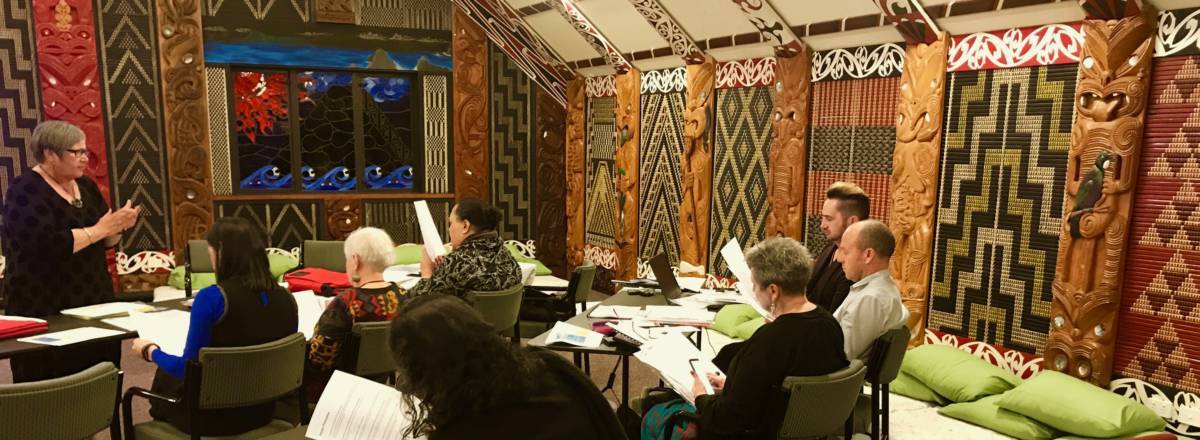What is Te Hurihanganui?
Posted on 04 September, 2020
Budget 2018 provided an allocation for the Ministry of Education to work with a group of ten Mātanga (experts), to design a blueprint to strengthen equity and lift achievement for Māori students.
The collective experience, and evidence about what would work for ākonga Māori, ensured that this blueprint would build on the lessons learnt from Te Kotahitanga and subsequent programmes, while also considering new system settings. Mātanga expertise spanned the entire education system from Early Childhood, including iwi and whānau Māori.

The Mātanga group comprised Jim Peters, Professor Wally Penetito, Mere Berryman as the chair, Daniel Murfitt, Professor Roberta Hunter, Te Waipounamu Teinakore, Dr. Lesley Rameka, Hurae White, Therese Ford and Whetu Cormick.
 Although we knew that sites of excellence could be found in some English medium schools, we agreed that exemplars in which Māori students were enjoying and achieving educational success as Māori were more likely to be found in kaupapa Māori settings.
Although we knew that sites of excellence could be found in some English medium schools, we agreed that exemplars in which Māori students were enjoying and achieving educational success as Māori were more likely to be found in kaupapa Māori settings.
Within these settings, Māori culture, identity and language are actively prioritised and celebrated, and whānau Māori are more likely to be an active and valued part of their children’s learning experiences and cultural affirmation.
Alternatively, over successive generations, our state education system has socialised a dominant narrative reinforcing privilege based on the English language and colonial values. Subsequently, education has been largely undertaken against a deficit background of misunderstanding, bias and racism which, together with the devaluing and suppression of Māori language and values, has perpetuated ongoing disparities and disadvantage for Māori.
 We understood that supporting ākonga Māori to experience education success required us first to understand and respond to this historical colonial context and that this would require significant action and commitment if we were to transform the system to support and sustain Māori education success as Māori.
We understood that supporting ākonga Māori to experience education success required us first to understand and respond to this historical colonial context and that this would require significant action and commitment if we were to transform the system to support and sustain Māori education success as Māori.
Te Hurihanganui
A new name was also needed to reflect the transformative nature required of the work and locate this initiative within the wider Education Work programme. After lengthy discussions, Kingi Kiriona (Ngāti Ruanui, Ngāti Kahungunu and Ngāti Apa) gifted the name Te Hurihanganui, providing the following explanation:
… it is said that Ranginui (the Sky Father) and Papatūānuku (the Earth Mother) were separated by their son Tāne Mahuta and his brothers. Such was the grief of both parents following the separation, and as an act of aroha, the children elected to turn their mother face down to avoid one parent seeing the sadness and despair of the other. This act became known as ‘Te Hurihanganui’, the great change or turning point, from which mankind evolved into Te Ao Mārama (the World of Light).
We agreed that Te Hurihanganui and this story were symbolic of the significant action required to achieve transformative education system reform. We recognised that to realise the educational potential of ākonga Māori, this new initiative must be revolutionary and act as a turning point for the system. However, in accepting the name, Te Hurihanganui, responsibility must also be taken for the courageous guardianship this name, and initiatives associated with it, will require.
Design Principles to Budget Bid
Based on evidence and our experiences of what works for Māori in education, six design principles that we believe are critical for transformative education system reform were reported to Minister Davis.
- Te Ao Māori – Rich and legitimate knowledge is located within a Māori worldview. Under Te Tiriti o Waitangi, the education system must create and hold safe spaces for this knowledge to reside, supporting Māori to live and succeed as Māori.
- Tino Rangatiratanga – Māori exercise authority and agency over their mātauranga, tikanga, and taonga. In order to access this knowledge, Māori leadership is essential. Through decolonisation of the education system, Māori potential will be realised.
- Whanaungatanga – Whānau relationships are an exemplar for authentic, meaningful and transformative relationships in education. These relationships are based on mutual trust and respect from which shared understandings and reciprocal benefits can arise.
- Te Ira Tangata – Everyone is born of greatness and imbued with inner potential and conscious awareness. This brings with it the responsibility to be critically aware of ourselves, our world, and each other.
- Mana Ōrite – Te Tiriti o Waitangi is the foundation for equal, reciprocal, respectful and interdependent relationships between Māori and non-Māori (Pākehā - of colonial heritage, and tauiwi - more recent migrant of refugee).
- Te Hāngaitanga – We must take collective responsibility for ensuring Māori can enjoy and achieve education success as Māori. This can be achieved if all within the education system (Māori, Pākehā and Tauiwi) work in unison to understand and address these design principles.
Together, these interdependent principles offer greater potential for developing an equitable and excellent education system where Māori students will come to believe they are valued and belong.
The Ministry used this work to develop a budget bid which successfully received 42 million dollars over the next three years from the Wellbeing budget. How this work will play out, and with whom, is yet to be decided. We trust that our blueprint and principles continue to be interpreted from positions of cultural strength and potential. We know that our future sits with our children who deserve better than we received and that this responsibility will ultimately sit with all of us.
Submitted by: Te Hurihanganui Mātanga